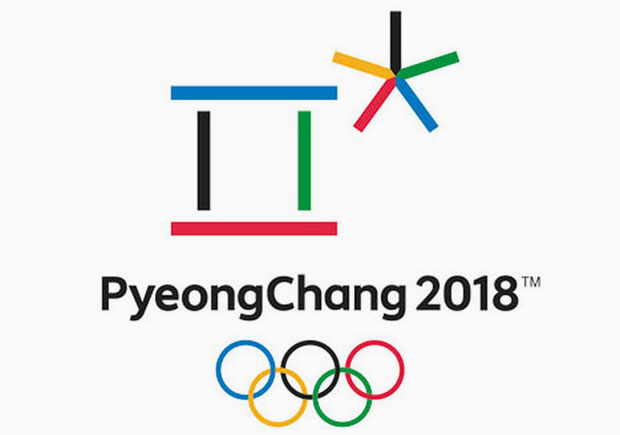The parade of Olympic athletes entering Pyeongchang, South Korea, could be quite colorful for a few reasons. Athletes from North and South Korea will enter together for the first time in more than a decade, and viewers at home will be able to see the ceremony — and even some events — like never before.
NBCUniversal has decided to make the XXIII Olympic Winter games available to cable and satellite partners in 4K High Dynamic Range, or HDR.
Dish, DirecTV, and Comcast customers who have compatible TV sets and subscriptions to the appropriate service will be able to take in the 4K HDR coverage.
This year’s games are not the first Olympics to be delivered in 4K — NBC distributed the Rio Olympics in 2016 in 4K Ultra High Definition. However, this year’s winter games can boast the addition of the High Dynamic Range element, which promises even more stunning colors in addition to a higher resolution.
“For the first time, the Winter Olympics will be available in 4K HDR, marking an exciting milestone for both the TV industry and Olympic viewers,” said Dish Chief Technology Officer Vivek Khemka. “We’re pleased to work with NBCUniversal to give customers access to this year’s inspiring Olympic performances in the clearest resolution and richest color palette available, maximizing the potential of their 4K HDR TVs.”
Time Delay
There is a catch, however. The opening ceremonies will take place on Friday and will be carried in the normal high definition (HD) format on NBC, thus available on all providers that carry the broadcast network. Viewers who want the higher resolution 4K HDR will have to wait until Saturday to see the ceremonies in all their glory.
Given the time difference between the United States and South Korea –14 hours to the East Coast — viewing of the games will be time-delayed anyway, to an extent. That said, most — if not all — of the 4K HDR content will be delayed until 24 hours after the “live” broadcast.
In addition, because the broadcast production world hasn’t moved fully to 4K HDR, not all of this year’s Olympic events will be provided in the format. The content will be limited to the opening ceremonies, figure skating, short track (racing), ski jumping and ice hockey, according to NBC. The closing ceremonies aren’t listed at the present time, but it is likely they will be in 4K HDR as well.
Gold for TV Makers
The athletes may not be the only ones aiming for gold at these Olympic Games. TV makers could hope to score as well by offering discounts on 4K HDR sets.
“Big sports events typically drive new TV sets,” said Roger Entner, principal analyst at Recon Analytics.
“It’s very difficult to buy a new TV set that isn’t 4K/UHD these days,” he told TechNewsWorld.
Sales of these sets already have been strong, with a boost from the recent Super Bowl.
“4K UHD TVs have experienced significant growth in recent years, with more than 80 million thought to have shipped during 2017,” said David Tett, market analyst for consumer electronics at Futuresource Consulting.
“The growth has been centered in North America, Western Europe andChina, but has been seen across all regions of the globe,” he told TechNewsWorld.
“As price falls further and demand for larger screens continues to increase across the world, shipments will continue to grow strongly, with double-digit growth expected for many years to come and over 25percent of worldwide homes expected to own a 4K UHD set by the end of2021,” Tett added.
Not Exactly Plug and Play
NBC may be providing 4K UHD content, but it won’t actually be available to broadcast viewers who receive the network programming over the air. Even current subscribers to Comcast, Dish, and DirecTV may need to do more than simply plug in and hook up a new set.
Dish customers will need to have a Hopper 3 set-top box, while DirecTV subscribers will need to have a Genie HD DVR (model HR54 or above) or a 4K Genie Mini set-top box. Certain subscription plans may be required as well.
“The practical question is whether [the Olympics opportunity] causes people with 4K TVs to configure their pay-TV devices to actually watch some 4K content for once,” noted Joel Espelien, senior analyst at The Diffusion Group.
“DirecTV customers have to hook up a second set-top box companion device that sits between the main satellite receiver and the 4K TV,” he told TechNewsWorld.
“It’s not clear how many people have actually bothered to do this, given the relative scarcity of 4K content,” Espelien added.
Olympic Glory
This is the first true “ready for prime time” event to be delivered in 4K HDR, so it’s uncertain whether it can deliver the viewing experience that broadcasters and TV makers have been promising.
“The Winter Olympics have a wide color gamut — white snow, the black sky at night, colorful team outfits,” noted Recon Analytics’ Entner.
I”All of this looks much better as the TV and the transmission detail increases, and the Winter Olympics are the best international event to show that, probably even better than the World Cup this summer,” he added.
Of course, the weather would need to agree for certain events that take place outside, such as ski jumping. That could have been a factor in the decision not to include other outdoor events in the 4K HDR lineup, such as downhill skiing and snowboarding. Even in ideal weather, those events may not show off the full potential of the new TV sets.
“The Winter Olympics are notoriously hard to shoot, as a significant portion of the screen is filled with a ‘white” image with limited contrast,” noted Tristan Veale, market analyst at Futuresource Consulting.
“The extra dynamic range should provide a significantly improved viewing experience for those with a compatible HDR TV, with far greater definition between different shades of whites and grays displayed without impacting the image quality of the, often, brightly-colored competitors,” he told TechNewsWorld.
Where the quality of the picture might really be seen is inside the arenas!
“My guess is that it’s all about the figure skating, which should look amazing in 4K,” said Espelien. “That’s what the audience mainly cares about. It is like you’re right there in the arena.”
Future of Sports
At present, some TV productions are already being produced in 4K as a way to future-proof content, but in the short term, sports could be the game changer that causes audiences to adopt the new TV technology and even pay for the content.
“Sporting content is amongst the most important broadcasters have to offer, and consumers with new 4K UHD sets will often be looking for content like this to trial their new sets and gauge the quality of their purchase,” said Futuresource’s Tett.
“Those who have not made the upgrade yet can try to be persuaded through retailer and vendor promotions, with the promise of a heightened viewing experience on a new TV,” he added.
“Traditionally, major sporting events tend to bring forward sales within a year rather than cause the market to grow, meaning consumers will choose to purchase a set earlier in the year to watch the event rather than delaying their purchase to later months, as they may have otherwise done,” Tett noted.
The next big test could be for sports, and 4K HDR could advance this summer when the world’s most popular sporting event takes place in Russia.
“With the FIFA World Cup approaching, this is another reason for ramping up live capture of major sporting events in 4K, as it will give the entire broadcast chain more experience with this,” said Futuresource’s Veale.
The visuals may even get better.
“We will see higher frame rates, which will benefit any sporting event with an element of speed, such as the key events of the Winter Olympics,” said Veale. “While some sporting events are already being broadcast at 50 to 60 frames per second, when we move towards 120fps, this will provide a much smoother and clearer picture of fast-moving objects.”























































